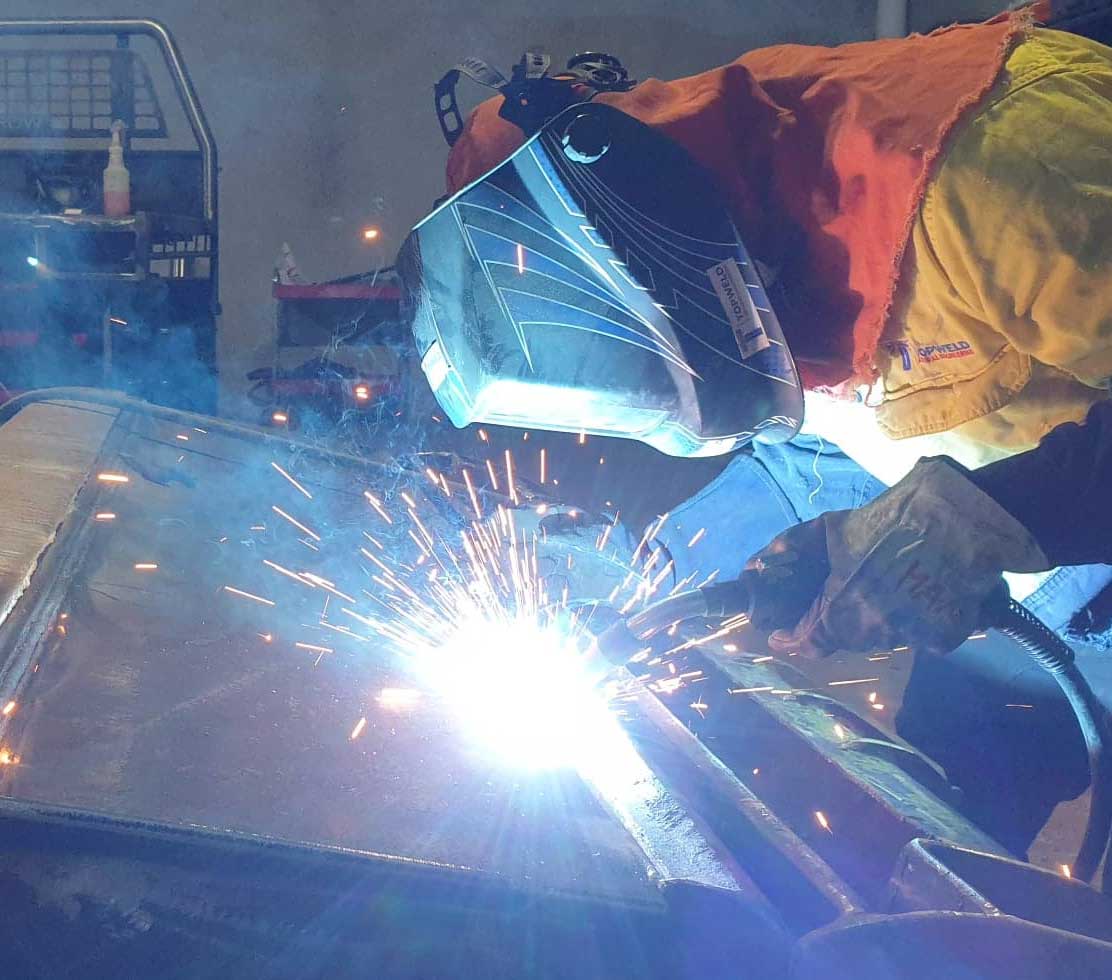The Importance Of Protective Gear And Safety Equipment In Welding

Personal protective equipment (PPE) is essential for a metal fabrication shop like TopWeld and other industrial settings where the environment is potentially toxic. In addition to protecting the welder or fabricator, PPE can provide additional protection for exposure to metal fumes, UV radiation, burns, cuts, shocks and falling debris.
According to Occupational Safety and Health Administration (OSHA), PPE is required for all workers in the workplace. PPE should be comfortable and provide optimum protection for the wearer. In addition to protecting against exposure to harmful substances, PPE can prevent injury from falls, cuts, punctures, and lacerations.
The most effective way for welders to be protected when working is to wear protective clothing from head to toe and to use welder safety tools. While not all of the necessary safety precautions are needed, welders must wear the appropriate welding equipment to prevent injuries from occurring during work.
The following are the types of PPE commonly used in industries:
Welding Safety Supplies to Prevent Eye Injuries
Welding Helmets
In custom metal fabrication, eye protection is one of the most important pieces of welding safety equipment used by welders. According to the OSHA eye protection fact sheet, radiant energy or light radiation from arcs or flames can harm welders’ eyes. The lens shading number indicates the amount of radiant energy that the helmet should absorb before it’s capable of causing harm to the eyes. Choosing the right helmet shade number is important in preventing eye damage and should guard against potentially harmful radiation. A proper welding helmet can protect against electrical sparks reaching your face or eyes.
Welders are advised to utilize an ADF (auto-darkening filter) on a helmet to provide additional protection. Lifting and lowering the filter can place a particular amount of stress on the eyes, especially when the fixed setting is activated. Welders and fabricators could use a helmet with a welding cap or beanie, often included with the welding safety equipment.
Safety Glasses
The most typical welding injuries are eye injuries caused by particles, irritation, or UV radiation exposure. Wearing safety goggles is an OSHA requirement, and the safety equipment used must meet ANSI Standard Z87.1, Practice for Occupational and Educational Eye and Face Protection.
Welding Safety Supplies for Full-Body Protection
Welding Jackets
Welding jackets can be made of various materials for protection against the environment, fire hazards, and chemical vapors. In addition to standard apparel material welding jackets and suits, such as cotton or polyester, many companies that offer welding services in Leeton, NSW, have also recommended fire-resistant cotton jackets with leather sleeves because it provides comfortable and effective protection against environment and fire hazards.
In addition to fire-resistant cotton jackets with leather sleeves, some welding companies have also recommended leather welding jackets because it provides excellent protection against chemicals. Some welders also enjoy wearing leather aprons under their jackets for additional protection.
Gloves
A welder should never work gloveless. According to OSHA, working as a welder requires protective clothing relating to the hazards you may be exposed to. Welding gloves may be made of leather, fabric, or metal mesh and go over a welder’s hands and lower arms.
Boots
Wearing welding boots is an important safety precaution when welding. Welding boots protect the feet and lower legs from burns, cuts and other injuries. In addition to protecting the feet, welding boots provide a stable platform for welding and help reduce the chances of tripping or falling.
Active Standard ASTM F 2413 provides guidelines for the design, manufacturing and performance of welders’ footwear. This standard covers various topics, including the selection of materials, construction methods and appropriate testing procedures. This standard aims to ensure that welders’ footwear is designed to protect them from injury while providing a stable platform for their work.
Good boots or foundry shoes are necessary for any welder and should comply with ASTM F 2413, Standard Specification for Performance Requirements for Protective (Safety) Toe Cap Footwear. The standard boot style on most PPE lists and for many welders are leather work boots with rubber soles and steel toes.
Some welders choose boots without laces to protect their laces from sparks ignited on the worksite. Some welders choose boots without laces to keep their laces from catching fire on the job. Metatarsal covers can be placed over laced boots to constitute a visual barrier and reduce the possibility of a knee injury.
Welding Safety Equipment for The Work Environment
Fire Extinguishers
The welding profession requires constant vigilance against fire. This is why it is important to be able to reach out for a fire extinguisher in case of an emergency. The good news is that there are plenty of portable fire extinguishers.
Welding poses a serious fire hazard, and welding workshops and work areas ought to be equipped with fire extinguishers as prescribed by OSHA regulations. It’s also essential to clear welding workshops and worksites of flammable or hazardous materials.
Grounding Equipment
The choice of grounding tools will vary depending on the welding equipment used and the possible danger of welding jobs. It is important to ensure all double-insulated welding equipment is grounded to avoid the risk of electric shock.
Welding Respirators
There are several different welding respirators, so the welder’s style must be decided based on the element. The American Welding Society suggests them because they are good for preventing asthma and pneumonia triggered by toxicity in fumes. Welding respirators can be attached to helmets and should be slip-resistant and comfortable.
Conclusion
In conclusion, welding is dangerous, and welders and fabricators must be properly equipped with protective gear and safety equipment to avoid injury. Proper use of these items can reduce the risk of serious burns, electrocutions, and even death. Not properly-protected workers may face serious penalties, including lawsuits and jail time.











